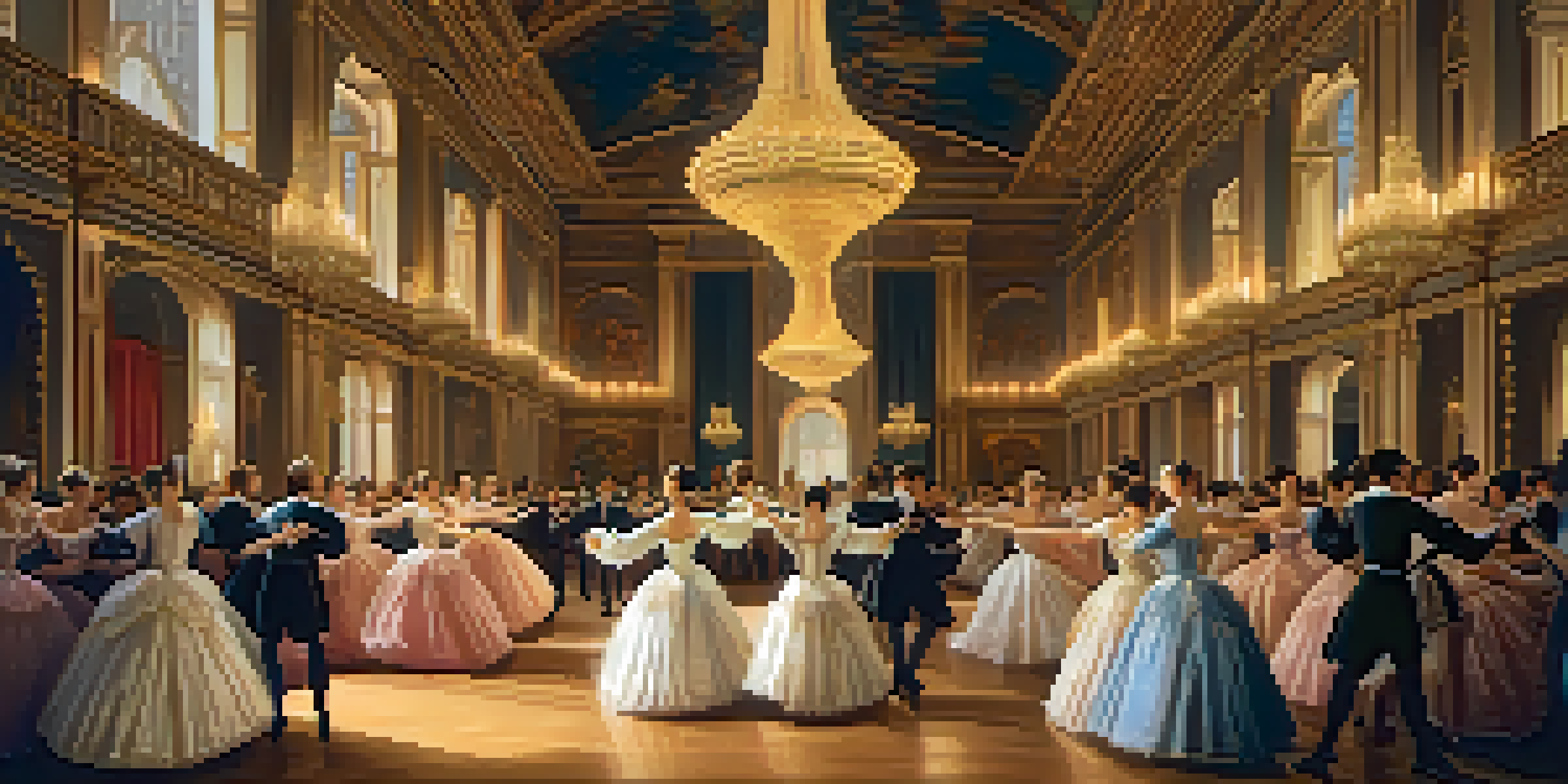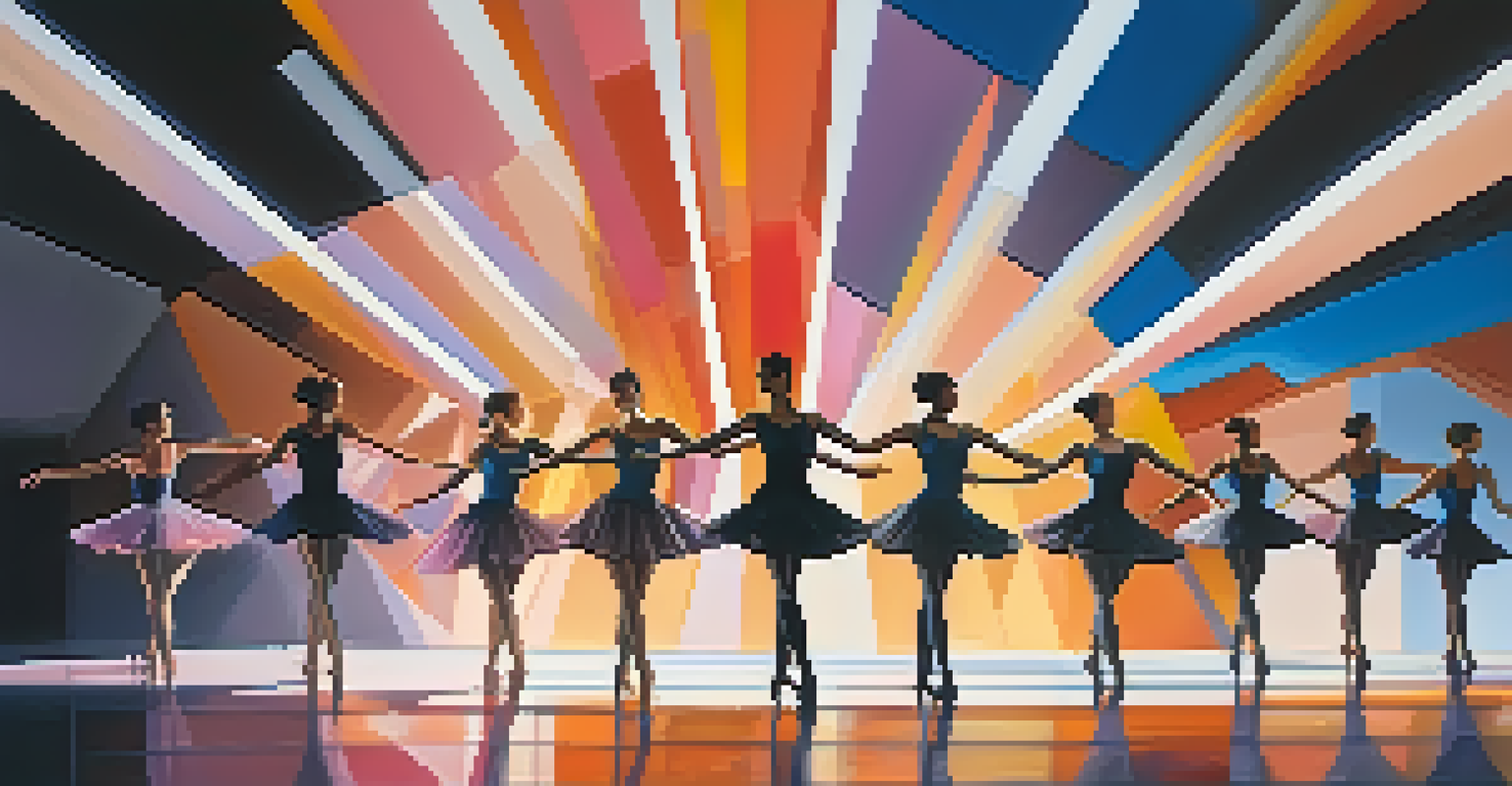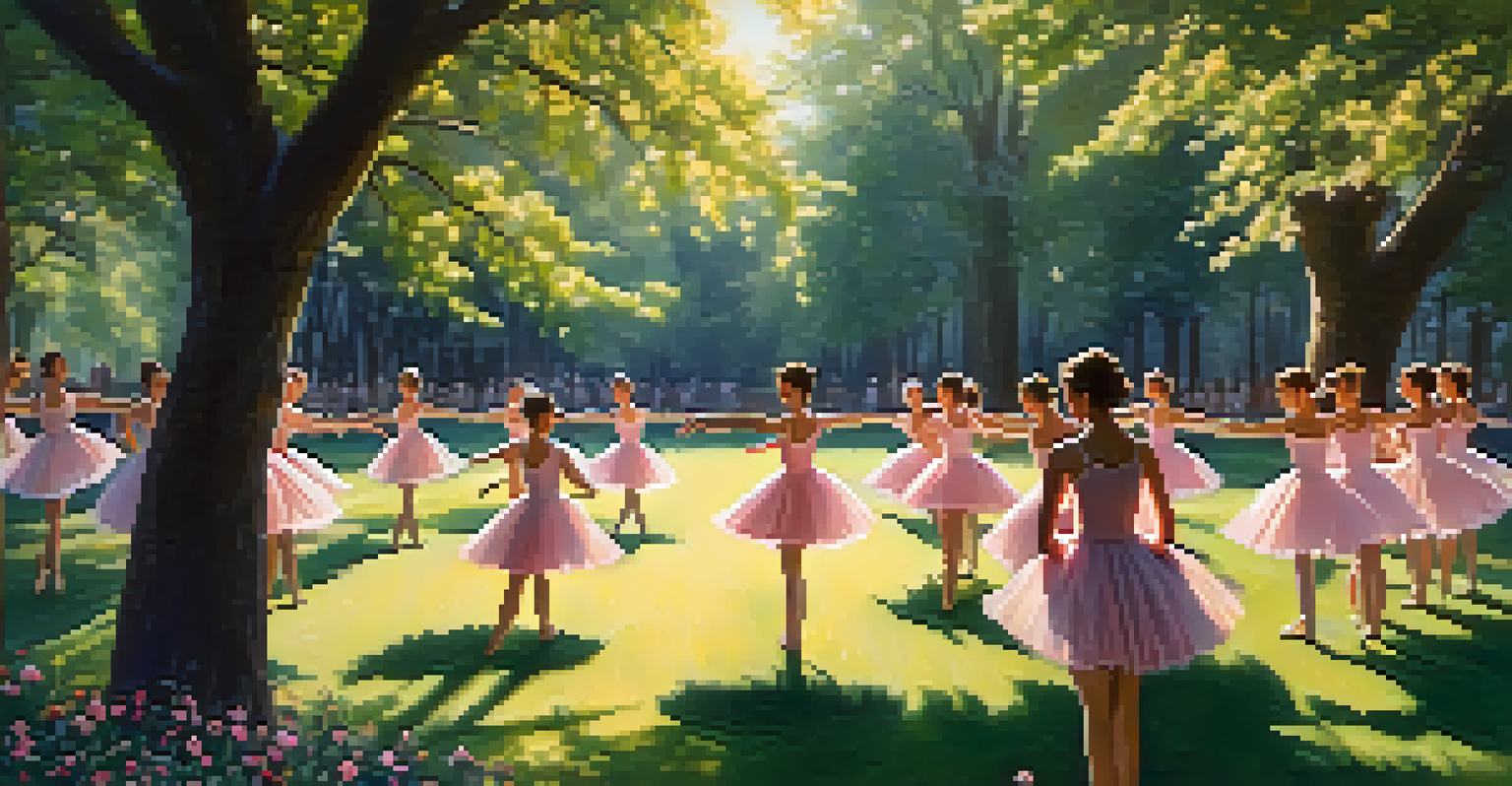The Evolution of Ballet: From Renaissance to Modern Day Styles

The Birth of Ballet in the Renaissance Era
Ballet originated in the Italian Renaissance courts of the 15th century, where it was initially a form of entertainment for the nobility. The blend of music, dance, and drama created a dazzling spectacle, laying the groundwork for what ballet would become. As it made its way to France, influential figures like Catherine de' Medici began to shape its development, introducing more formalized movements and structure.
Ballet is like a dream. It’s a story that you can tell without words.
In this early phase, ballet was less about individual expression and more about showcasing the grandeur of the court. Dancers wore elaborate costumes that often obscured their movements, focusing instead on the aesthetic appeal. The term 'ballet' itself comes from the Italian word 'ballare,' meaning 'to dance,' emphasizing its roots as a social dance form.
As the Renaissance progressed, ballet became increasingly theatrical, with a focus on storytelling. This transformation set the stage for the evolution of dance, paving the way for later styles that would thrive in the centuries to come.
The Flourishing of Ballet in the Baroque Period
The Baroque period, spanning the 17th century, marked a significant evolution in ballet, particularly in France, where it gained royal patronage. King Louis XIV, known for his love of dance, established the Académie Royale de Danse in 1661, formalizing ballet as an art form. His performances, often portraying mythological characters, elevated ballet's status and popularity across Europe.

During this time, choreographers began to codify dance steps and techniques, resulting in the development of the five basic positions of the feet that are still taught today. The emphasis shifted toward technical precision and the depiction of emotion through movement, allowing dancers to express a wider range of feelings. This era also saw the introduction of the ballet 'suite,' a series of dances that showcased different styles.
Ballet's Origins in the Renaissance
Ballet began as a noble entertainment form in the 15th century Italian courts, evolving from social dance to a more structured art form.
As ballet continued to flourish, it became increasingly intertwined with music and drama, setting the foundation for narrative ballets that would emerge in the following centuries. The Baroque period truly transformed ballet into a sophisticated performance art, attracting audiences far beyond the royal courts.
The Rise of Classical Ballet in the 19th Century
The 19th century is often regarded as the golden age of classical ballet, characterized by the emergence of iconic ballet companies and a focus on virtuosic performances. This era introduced the concept of the ballerina, with female dancers taking center stage and showcasing their athleticism and grace. The Romantic movement influenced ballet, emphasizing themes of love, fantasy, and escapism.
Dance is the hidden language of the soul.
Choreographers like Marius Petipa revolutionized ballet with masterpieces such as 'Swan Lake' and 'The Nutcracker.' These works combined intricate choreography with expressive storytelling, captivating audiences and solidifying ballet's place in the performing arts. The introduction of the pointe shoe allowed female dancers to perform on their toes, creating an ethereal quality that became synonymous with classical ballet.
As theaters became more accessible, ballet reached a wider audience, and the art form began to evolve. The 19th century not only established ballet as a prominent art but also laid the groundwork for future innovations that would continue to shape its trajectory.
Exploring Neo-Classical Ballet in the Early 20th Century
The early 20th century brought about the emergence of neo-classical ballet, which sought to blend traditional ballet techniques with modern influences. This period was marked by choreographers like George Balanchine, who stripped away the narrative elements of classical ballet, focusing instead on movement and form. His work emphasized the beauty of the body in motion, showcasing a more abstract approach to choreography.
Neo-classical ballet often featured contemporary music and innovative staging, challenging the conventions of classical ballet. Dancers were encouraged to express themselves through both technical precision and emotional depth, resulting in a fresh perspective on the art form. This shift not only attracted new audiences but also inspired a generation of dancers to explore their creativity.
Classical Ballet's Golden Age
The 19th century marked the golden age of classical ballet, with iconic works and the rise of the ballerina showcasing technical prowess and storytelling.
As the boundaries of ballet continued to expand, the fusion of classical and contemporary styles opened up new possibilities for expression. Neo-classical ballet played a crucial role in redefining the art form, paving the way for even more experimental approaches in the decades that followed.
The Advent of Contemporary Ballet in the Late 20th Century
The late 20th century marked a significant turning point in the evolution of ballet, as contemporary ballet emerged as a distinct genre. This style challenged traditional norms, embracing a wide range of influences, including modern dance and other cultural forms. Choreographers like William Forsythe and Twyla Tharp explored innovative movement vocabulary, pushing the limits of what ballet could be.
Contemporary ballet often incorporates elements of improvisation, allowing dancers to express their individuality and creativity. The emphasis shifted from strict technique to a more fluid interpretation of movement, encouraging a deeper connection between the dancer and the audience. This evolution reflected broader societal changes, as artists sought to represent diverse experiences and perspectives.
As contemporary ballet gained traction, it began to attract new audiences who appreciated its dynamic and inclusive nature. This genre broadened the definition of ballet, proving that it could adapt and thrive in an ever-changing artistic landscape.
The Influence of Global Cultures on Modern Ballet
In recent years, the influence of global cultures has enriched the landscape of modern ballet, introducing new styles and narratives. Dancers and choreographers from diverse backgrounds have brought their unique perspectives and traditions to the stage, creating a more inclusive art form. This blending of cultures has led to innovative works that reflect a wide range of human experiences.
Collaborations between ballet companies and artists from different disciplines have become increasingly common, resulting in groundbreaking performances that challenge conventional boundaries. Examples include fusions with hip-hop, jazz, and traditional folk dances, each adding its own flavor to the choreography. These collaborations not only showcase the versatility of ballet but also highlight the importance of cultural exchange in the arts.
Contemporary Ballet's Diverse Influences
Modern ballet incorporates global cultural influences and innovative styles, leading to a more inclusive and dynamic art form.
As modern ballet continues to evolve, it embraces the richness of global influences, creating a vibrant tapestry of movement that resonates with audiences around the world. This ongoing dialogue between tradition and innovation ensures that ballet remains a dynamic and relevant art form.
The Future of Ballet: Innovations and Possibilities
Looking ahead, the future of ballet is filled with exciting innovations and possibilities. Technology is playing an increasingly significant role in dance, with advancements like virtual reality and digital media transforming the way we experience performances. Choreographers are experimenting with multimedia elements, creating immersive experiences that engage audiences in new and unexpected ways.
Moreover, the conversation around diversity and representation in ballet is gaining momentum, prompting companies to reevaluate their practices and programming. This shift towards inclusivity is essential for the art form's growth, ensuring that diverse voices and stories are heard and celebrated. As ballet embraces these changes, it invites new generations of artists to contribute their perspectives.

Ultimately, the evolution of ballet reflects the changing landscape of society itself. As it continues to adapt and innovate, ballet will undoubtedly remain a powerful medium for storytelling and expression, captivating audiences for generations to come.